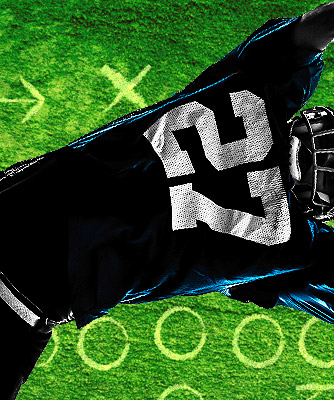Texas Holdem Basics
Dear Mark,
My elderly mother was the typical little old lady in tennis shoes who enjoyed going to a casino and playing video poker. However, because of health problems for the last few years, she is, for the most part, housebound and can't go. She has a little handheld poker game, but it isn't satisfying for her. However, she has recently discovered Texas Hold 'em poker shows on cable TV and really enjoys watching them. But there are some things she doesn't understand about the game, and they never seem to explain them. For instance: What is the "button" and why is it an advantage to be "on the button?" What are the blinds? Are they like an ante? Why do they keep raising in value?
She would appreciate any explanation you can give her and hopes you can help explain it to her in language she can understand. Some of your other readers might be interested in the clarification, too.
- Cindy F.
I can see it in print now: "Granny in sneakers wins $1 online tournament from her Lazy Boy chair and parlays it to the final table at the World Series of Poker". Hey, it's been done; though not by someone of your mom's mature stature-yet!
Anyhow, let's tackle your list of questions beginning with the button.
Just in front of one of the players on the game, Cindy, you will notice a small, generally white, disk. This disk is called the "button." The button shows who would be dealing the cards if he or she were actually the dealer. Holding the dealer button in Texas Hold'em is to your advantage, because the dealer is the last player to take action after the deal. By acting last, the dealer has helpful additional information when it's betting time.
To stimulate action before the first cards are dealt, most poker games require a blind bet or an ante. If antes are used, all players must post a standard amount of up-front seed money in order to receive their first cards. An ante is a forced bet in which each player places an equal amount of money or chips into the pot before the cards are dealt.
You will find antes used in your traditional Stud games. The blind bet is a flexible alternative to the ante for getting the initial money in the pot. It is a required wager of some, but not all players, that must be posted before anyone gets to see his or her cards.
In Texas Hold'em with blind wagers, the first two players to the left of the dealer post their bets before they see any cards, and are thus, still "blind." This required wager rotates around the table as does the dealer button. Because blinds require forced wagers, blind bettors, in return, can raise once the betting has gone around the table the first time and it's their turn to act again.
The concept of blinds is simple, Cindy, and your Mother will pick it up in seconds, so let's get busy with an example. The first player to the dealer's left (the first to bet after the deal) makes a blind bet of $10, then the player to his left posts a fearless blind wager of $20.
Once the cards have been dealt, play continues with the next player in turn (third from the dealer), who acts just as if the $10 had been an opening bet and the $20 was a raise, so he must either call $20, re-raise, or fold. When the betting returns to the player who had the forced $10 blind bet, he acts just as if that had been the opening bet; he must equal the bet facing him (toward which he may count his original $10), re-raise or fold.
To ensure that there is constant betting action on every hand, blinds in a no-limit tournament increase progressively at pre-determined time intervals. They continue to go up as the day goes on, raising the stakes and the pressure, especially on the player who lurks and seldom acts. That type of player risks getting his or her bankroll eaten up bit-by-bit by the erosion of the increasing blinds. Best regards to your Mom.
Random Betting Articles
- Casino Comps
- Dealing Cards in Blackjack
- Full Coin in Slots
- Jacks or Better Betting Tip
- Lucky Ladies Side Bet
- Parlay Bet Odds
- Royal Match Side Bet
- Baccarat Betting Tips
- Baccarat Commission
- Poker Betting Rules
Popular Betting Articles
- Taking and laying odds
- Five Level Betting System
- Over / Under 13 Bet
- No Mid-Shoe Entry Rule
- Blackjack Betting Conditions
- Fraudulent Betting Systems
- Texas Holdem Basics
- Craps Betting Odds
- Texas Holdem Dead Card
- Craps Bets



